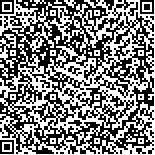下载中心
优秀审稿专家
优秀论文
相关链接
摘要

地表温度与发射率是地表—大气系统长波辐射和潜热通量交换的直接驱动力,是描述区域和全球尺度上地表能量平衡与水平衡的重要参数,其时空变化信息在气象预测、气候变化、水循环、地质勘探、农林监测和城市热环境等诸多领域具有广泛的应用。热红外遥感作为当前获取区域或全球尺度上地表温度和发射率的最有效手段之一,相较于传统的地面点位测量方法,具有空间覆盖范围大和重复观测等优势。对热红外遥感定量反演的地表温度与发射率产品进行地表真实性验证,有利于发现遥感数据自身或其反演算法的缺陷,确定产品的精度与不确定度,便于遥感产品的应用与推广。本文首先回顾了地表温度和发射率的定义,阐述了热红外遥感可反演、地面可测量的地表温度和发射率的科学内涵,并对利用热红外遥感数据反演地表温度和发射率的理论和方法作了概述;对地表温度和发射率地面验证的框架体系、验证指标进行总结,建立了基于精度、精确度、不确定度、完整性和稳定性的验证评价指标体系;总结了地表温度和地表发射率的地面验证方法、地面测量方法、辅助数据的获取方法、地表温度地面测量的采样方法,以及在验证异质非同温地表时从点到像元尺度的地表温度尺度转换方法等,分析了地面验证过程的主要误差来源;归纳了目前地表温度和地表发射率主要验证站点、观测网络及其空间分布特征;最后,本文讨论了地表温度与发射率地面验证存在的若干问题,并对地表温度与发射率验证工作的发展前景和趋势进行了相关展望。
Land Surface Temperature (LST) and Land Surface Emissivity (LSE) are the direct driving force of long wave radiation and latent heat flux exchange at the surface-atmosphere interface, which are also two important parameters on surface energy budget balance and water balance at regional or global scales, its temporal and spatial variations on surface-atmosphere interface have a wide range of applications on weather forecasting, climate change, water cycle, geological exploration, agriculture, forestry monitoring and the urban thermal environment research, and many other scientific fields. Remote sensing provides an effective approach to obtain LST and LSE at global scale rather than point measurements for its rather wider spatial coverage and temporal revisit convenience. The validation of quantitative retrieval on LST and LSE products is conducive to find the defects of remote sensing data processing or drawbacks on retrieval algorithms, as well as clarify the accuracy and uncertainty of the operational products, which is of great convenience for the application and popularity of these products. In this paper, firstly different definitions of LST and LSE are reviewed, and then the scientific connotation of LST and LSE which can be retrieved from thermal infrared remote sensing data and measured from in-situ experiments is explained. The theoretical background, such as radiative transfer theory and methods of LST and LSE retrieval from remote sensing data are then summarized and outlined. After that, the framework of LST and LSE validation are summarized systematically, the validation metrics of LST and LSE derived from remotes sensing data including accuracy, precision, uncertainty, completeness and stability is constructed. Based on the validation framework, the methods of ground validation for LST and LSE are introduced (including directly validation and indirectly comparison), and followed by the methods of ground measurements of LST or related auxiliary data. The method of scale conversion method from point level to pixel level for heterogeneous and non-isothermal surfaces are emphasized and analyzed, and the main error sources of LST validation and LSE validation are discussed, respectively. A summarization of the main sites or networks for the validation of LST and LSE is conducted and the spatial distribution and the main characteristics (such as heterogeneity, land cover) of the typical LST and LSE validation sites or networks are briefly analyzed. The current LST and LSE products derived from satellite remote sensing data, which utilize the abovementioned validation sites or networks are summarized to report their validation accuracy or uncertainty, and related development on validation of LST and LSE are reviewed. Finally, some problems of validation of LST and LSE are also presented, and then the future outlook and trends of validation are outlined and justified.

